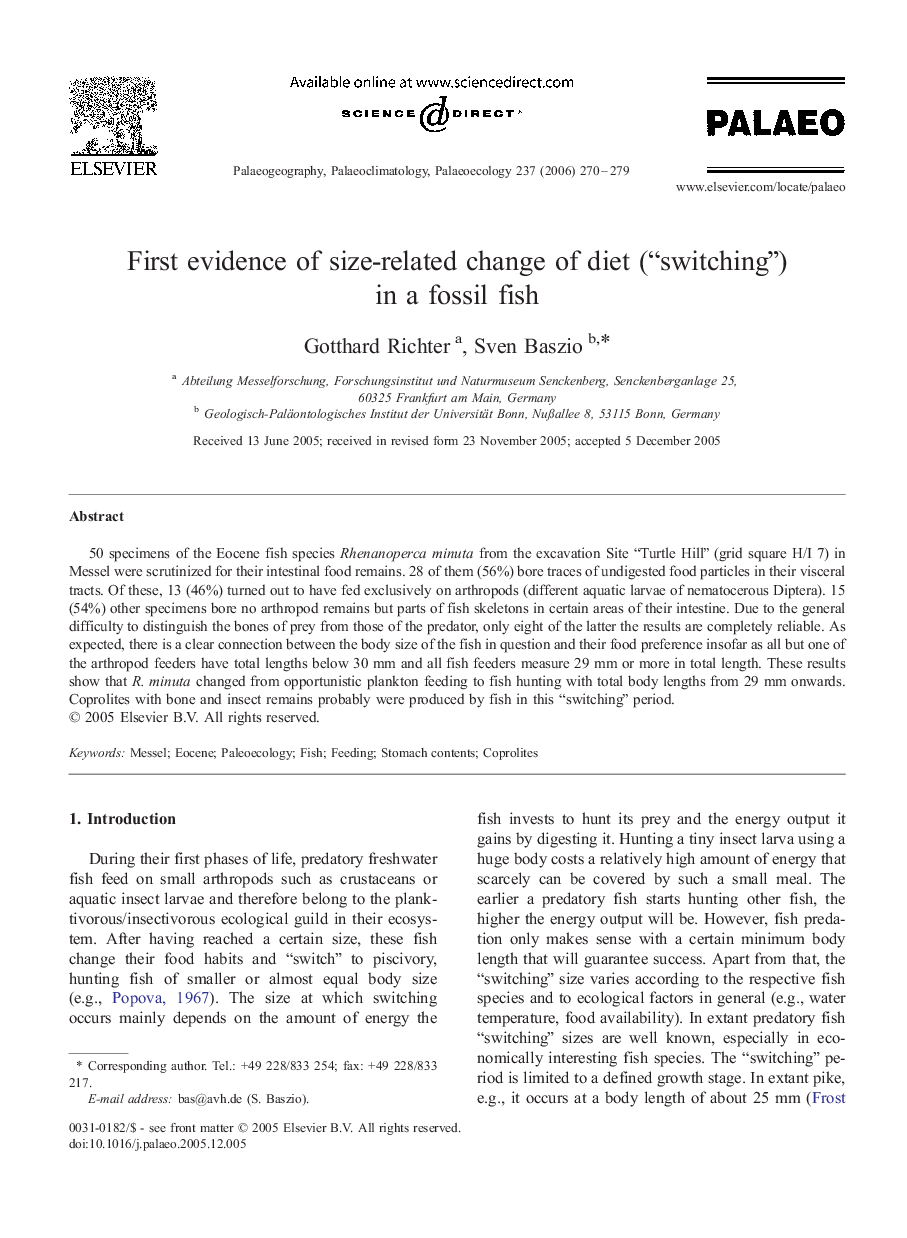| Article ID | Journal | Published Year | Pages | File Type |
|---|---|---|---|---|
| 4469412 | Palaeogeography, Palaeoclimatology, Palaeoecology | 2006 | 10 Pages |
50 specimens of the Eocene fish species Rhenanoperca minuta from the excavation Site “Turtle Hill” (grid square H/I 7) in Messel were scrutinized for their intestinal food remains. 28 of them (56%) bore traces of undigested food particles in their visceral tracts. Of these, 13 (46%) turned out to have fed exclusively on arthropods (different aquatic larvae of nematocerous Diptera). 15 (54%) other specimens bore no arthropod remains but parts of fish skeletons in certain areas of their intestine. Due to the general difficulty to distinguish the bones of prey from those of the predator, only eight of the latter the results are completely reliable. As expected, there is a clear connection between the body size of the fish in question and their food preference insofar as all but one of the arthropod feeders have total lengths below 30 mm and all fish feeders measure 29 mm or more in total length. These results show that R. minuta changed from opportunistic plankton feeding to fish hunting with total body lengths from 29 mm onwards. Coprolites with bone and insect remains probably were produced by fish in this “switching” period.
